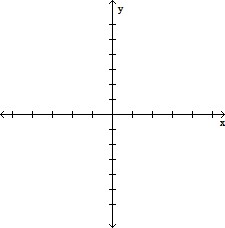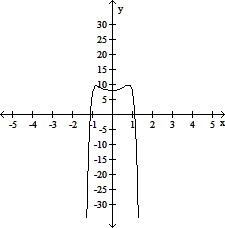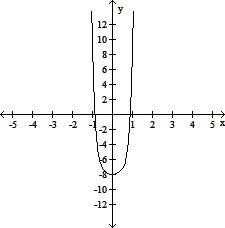Use Descartes' Rule of Signs to determine the possible number of positive and negative real zeros for the function. Then, use a graph to determine the actual number of positive and negative real zeros.P(x) = 9x8 + 3x6 + 3x4 + 2x2 + 8
A. possible: 1 pos, 1 neg
actual: 1 pos, 1 neg
B. possible: 1 or 3 pos, 1 neg
actual: 1 pos, 1 neg
C. possible: 1 pos, 1 or 3 neg
actual: 1 pos, 1 neg
D. possible: 0 pos, 0 neg
actual: 0 pos, 0 neg
Answer: D
You might also like to view...
Solve the problem.An insurance fund invests $104,200 in real estate and earns 14% per year on the investment. How much money is earned per year?
A. $14,588 B. $744,286 C. $74,429 D. $145,880
Use the discriminant to determine if the equation can be solved by factoring. If the equation can be solved by factoring, then factor it.f2 - 2f + 8 = 0
A. (f + 8)(f - 1) = 0 B. (f - 2.8)2 = 0 C. Cannot be solved by factoring D. (f + 7)(f - 9) = 0
Convert to polar coordinates. Express the answer in radians, using the smallest possible positive angle.(-2 , 2)
, 2)
A. 
B. 
C. 
D. 
Using the variable x, write the interval as an inequality.![]()
A. -3 ? x ? 1 B. -3 < x < 1 C. x ? -3 or x ? 1 D. x < -3 or x > 1